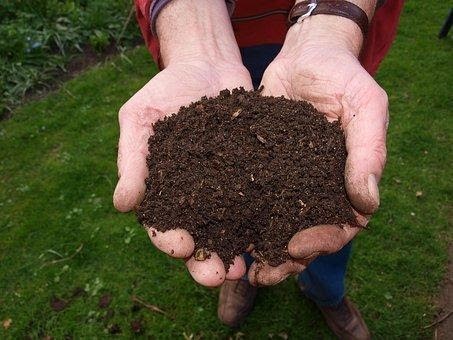
Clay soils are known for being unproductive. While clays are heavy and drain slowly, they are packed with nutrients. Clay soil is made up of silt-fine particles but doesn’t have tiny air pockets that provide oxygen to the plants and make soil crumbly and loose.
While it is difficult for the plants to survive in the clay, you can improve clay soil with mushroom compost. This post will discuss seven tips to improve clay soil and make it an ideal soil for your plants. Let’s read on.
Table of Contents
What is Mushroom Compost?
Before hopping on to the guide, it would be best to know about mushroom compost. The growing material left over after growing the mushroom on an industrial scale is known as mushroom compost. Don’t be confused if you hear someone saying ‘spent mushroom compost’ because it’s another name.
If it is unused, you may hear people saying it ‘unused mushroom compost.’ However, it is packed with nutrients and is an affordable way to improve the quality of your clay soil.
How is Mushroom Compost made?
It is made from a base combination of wheat straw and poultry manure or horse manure. As many farmers create their mixture, you may find mushroom compost with lime or peat moss. Generally, farmers or mushroom creators compost steam to kill any bacteria present in it.
Guide to Improve Clay Soil with Mushroom Compost
To improve the clay soil of your garden, you need to follow the complete guide. Therefore, read it till the end to make your soil friendly for your veggies and flowers.
1. Determine the Amount of Compost
It is important to determine the amount of mushroom compost that you need to use in your garden. Generally, the sellers sell this compost in cubic yards. Please take note that one cubic yard of compost covers 162 sq. feet of a garden to a depth of two inches.
2. Decide your Target Area
Decide your target area through a rototiller or shovel in which you are going to spread the compost. According to experts, it would be best to turn the soil to a depth of 6 to 8 inches, or deeper, if you want to get the best results.
It is a big no to working to wet clay soils as it is very heavy, and working it will worsen the condition of the soil. It would be best to work on it during a drought while it is rock-hard.
3. Break up the Clods
After turning the soil to a specific depth, break up the clods into smaller pieces using your hands or garden rake. The ideal size of the clods is smaller or equal to the size of a golf ball. It is also important to remove roots, rocks, and other large debris while making the clods.
4. Spread the Compost
Spread the mushroom compost over the tilled area to a depth of one to two inches. While heavy soils ideally need only one inch of compost, heavier soils require at least two inches of compost.
5. Incorporate the Compost
Using a shovel or rototiller, incorporate the compost into the area that you have prepared for growing your veggies and flowers as deeply as possible. We recommend incorporating the mushroom compost into the ideal depth that is six to eight inches but at least tries to put it into the first few inches of the soil.
During the incorporation, the clay clods should start becoming smaller with every hit of the spade or rototiller.
6. Test the New Soil
After incorporation, test the structure of your new soil. The ideal method of testing is squeezing it and scraping some soil together into a golf-sized ball. If the soil falls apart after making a ball, the work has been done wonderfully. If it sticks together, you need to add more compost into it.
7. Repeat the Process
To get an ideal structure of the soil, you need to repeat the process once or twice.
Wrapping Up!
You can create air pockets in your clay soil and make them ideal soil for your veggies and flowers. Do not forget to repeat the initial six steps mentioned above to create an ideal soil for your plants.
Hello, I am a professional writer and blogger at Adclays.com. I love to explore the latest topics and write on those topics. I spend the maximum of my time on reading and writing interesting topics which provide valuable piece of information to my readers whether it comes to the latest fashion, technology, healthy lifestyle, business information, etc. Explore my writings by visiting the website.